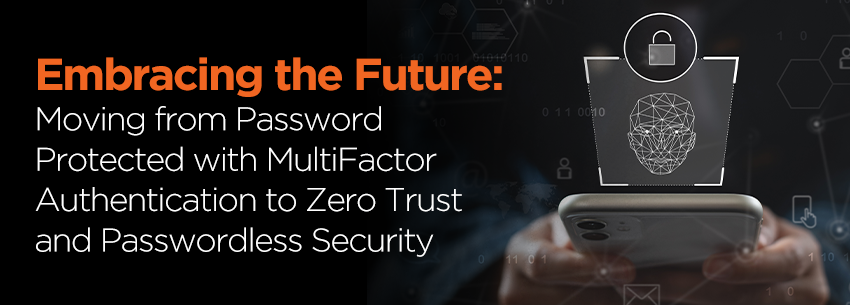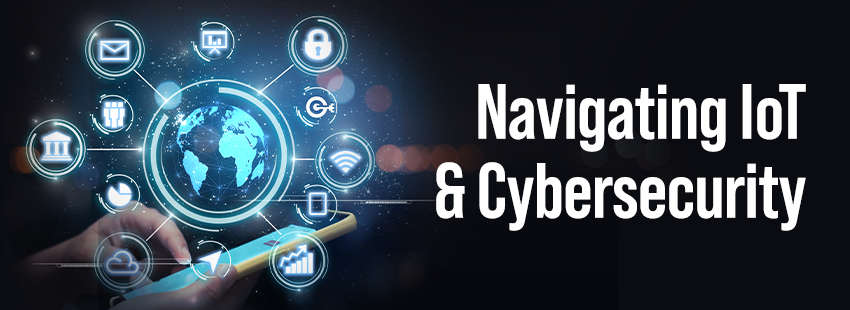Embracing the Future: Moving from Password Protected with Multifactor Authentication to Zero Trust and Passwordless Security
In today’s digital landscape, traditional password-based authentication, even with Multifactor Authentication (2FA or MFA), is no longer sufficient to protect sensitive data and prevent unauthorized access. Organizations must consider evolving to advanced security beyond passwords to incorporate zero trust and passwordless authentication as cyber threats evolve. This blog explores the benefits and considerations of moving from password protection with multifactor authentication to a zero-trust and passwordless security model.
The Limitations of Passwords and MFA:
“Something you know” or a password has been a primary way to authenticate for a long time. But that approach comes with inherent vulnerabilities. Weak passwords, passwords reused, and the increased risk of becoming compromised by a sophisticated phishing attack continue to decrease the security of passwords. While multifactor authentication can provide an extra layer of security by requiring an additional verification step, it still relies on passwords as the first factor.
Understanding Zero Trust:
Zero trust is a security framework that challenges the traditional approach of assuming trust once a user gains access to a network or resource. Instead, it treats every access request as potentially malicious and verifies the user’s identity and device before granting access. Zero trust is based on the principles of strict identity verification, continuous monitoring, and granular access control.
Advantages of Zero Trust:
- Enhanced Security: Zero trust assumes that compromise is likely. So, it seeks to minimize any way an attack can occur by assuming that one must “never trust, always verify.” This approach mitigates the risk of unauthorized access and lateral movement within the network.
- Adaptive Access Control: Zero trust enables dynamic access control based on user behavior, device health, location, and time of access. This approach aligns access privileges with the current security posture.
- Reduced Friction: Zero trust can provide a seamless user experience by eliminating the need for complex passwords and frequent authentication prompts. This improves productivity while maintaining security.
Transitioning to Passwordless Authentication:
- Hardware Security Keys: Hardware security keys, such as USB tokens or smart cards, provide an additional layer of security by requiring a physical device for authentication. They offer strong protection against phishing attacks and account takeovers.
- Mobile Authenticators: Mobile devices can serve as secure authentication tools through mobile apps that generate time-based or push-based authentication codes. These apps can be used with biometrics for a streamlined and secure user experience.
- Biometric Authentication: Passwordless authentication leverages biometric factors such as fingerprints, facial recognition, or iris scans to verify user identities. Biometrics offers a convenient and secure way to authenticate users without the need for passwords.
Considerations and Implementation:
- User Education: A successful transition requires educating users about the benefits and process of Passwordless authentication. Training and clear communication can help alleviate concerns and ensure smooth adoption.
- Integration and Compatibility: Organizations should assess their existing infrastructure and evaluate the compatibility of Passwordless solutions with their systems. Seamless integration and interoperability are essential for a successful implementation.
- Robust Identity and Access Management: Implementing a comprehensive identity and access management (IAM) strategy is crucial for effectively managing user identities, roles, and permissions within a zero-trust environment.
Conclusion:
The shift from password protected with MFA to zero trust and Passwordless security marks an evolution in authentication practices, addressing the limitations of traditional methods. Embracing zero trust principles and adopting Passwordless authentication methods empower organizations to strengthen security, improve user experience, and stay ahead of evolving cyber threats. By embracing these advancements, organizations can unlock the full potential of a secure and efficient digital future.
Remember, implementing such security measures requires careful planning, thorough testing, and ongoing monitoring to ensure the desired level of protection.
By: Mordy Hackel
https://www.linkedin.com/in/mordy-hackel/





